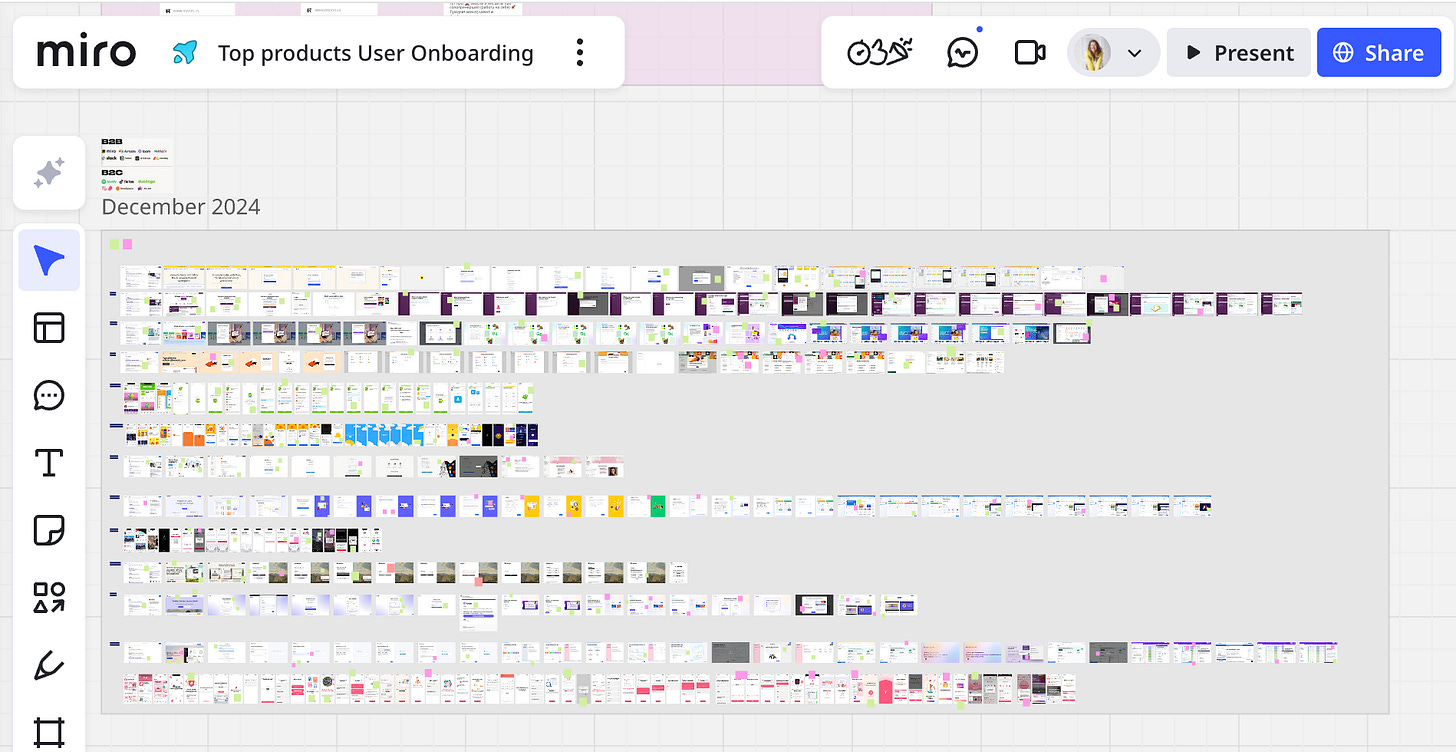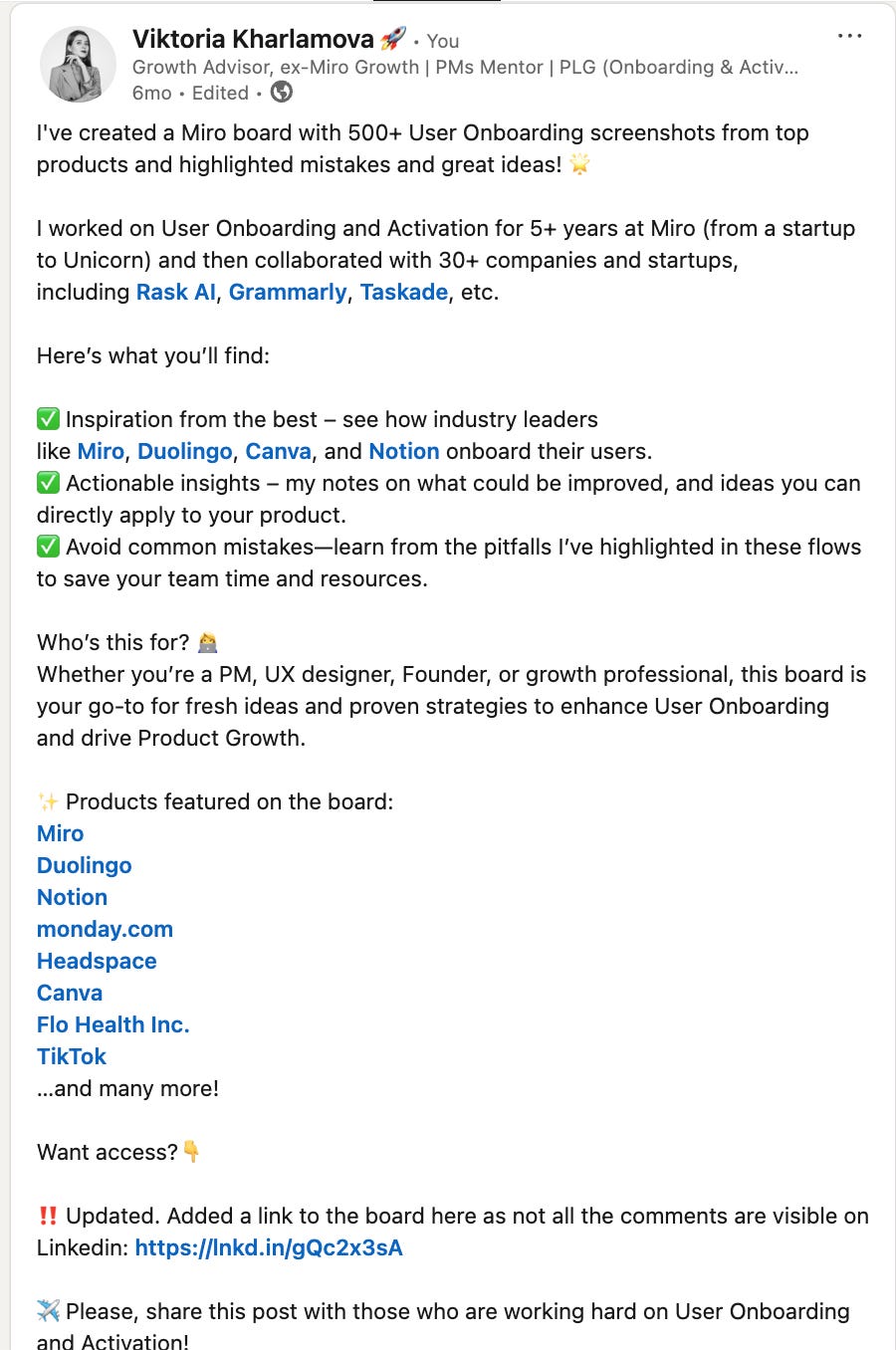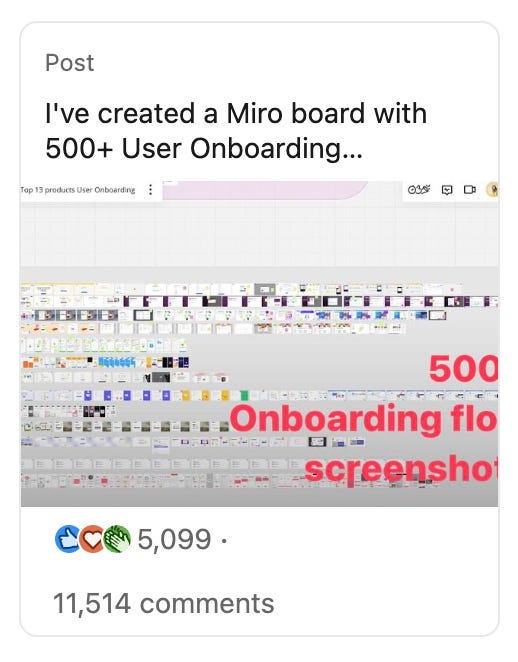How one LinkedIn post got me 1.4M views and 6,500 subscribers (and clients)🔥
... and how you can use it for your business.
Let me be honest, I'm not a big fan of posting on LinkedIn. I much prefer creating meaningful, high-quality content that helps people, rather than posting daily (I would rather spend time with my family or doing sports).
But sometimes, you set yourself a goal that requires stepping a little outside your comfort zone. That’s exactly what happened to me last December.
The crazy goal
It was nearing the end of the year, and I remembered about the goal I had for this year:
“To hit 10,000 LinkedIn followers.”
The problem was that I only had about 3,000 at the time.
Time was ticking. I could either do nothing… or try something bold.
Spoiler: I chose bold.
Who this article is for:
Product Managers trying to drive adoption and activation
Founders looking to grow their LinkedIn presence with real value
Marketers and Growth folks building content that converts
Anyone who wants to build authority and LinkedIn
What I did
I decided to use a Viral Loop framework and create a post with genuine viral potential, rather than the clickbait kind. It had to be valuable, practical, and based on my actual expertise.
🌀 The Viral value loop framework consists of 4 steps:
Build a valuable asset, something people want to share and save
Position with purpose, show your expertise, don’t just say it
Activate early supporters, get early traction from your network
Prepare to scale, anticipate growth, and make it easy to deliver
What was the topic for my framework?
Sure, User Onboarding. One of the most overlooked and business-critical areas in product growth. People struggle with onboarding all the time. Teams waste months building it … only to lose users on Day 1 because the onboarding experience sucks.
So I thought:
"Why not make it super easy for people to learn from the best products and my experience?"
The execution
Let me break down how exactly I made this post work, and spoiler, it wasn’t just luck or the LinkedIn algorithm loving me. There was some planning (and a little hustle) behind it.
Step 1: I created a valuable asset and put together a visual board with the best onboarding examples.
The key ingredients?
✅ Popular, recognizable products (like Slack, Duolingo, Notion, Miro)
✅ Clear, actual screenshots of their onboarding flows, not hidden behind passwords or buried in PDFs
✅ Quick, actionable notes explaining what they did well and why it works (that you can use asap), no vague theory, just practical takeaways
The goal? To make it ridiculously easy for anyone to get inspired and improve their own onboarding.
Step 2: I wrote the LinkedIn post with the intention
This wasn’t just “Hey, here’s a cool thing.” I made sure the post covered the following points:
✅ I positioned myself as a go-to expert in User Onboarding
✅ I clearly stated the value — what’s inside for the reader
✅ I spelled out exactly who this resource is relevant for (product managers, founders, growth teams)
I wanted people to not just like the post but save it, share it, and, ideally, see me as someone who can help with their product challenges.
Step 3: I activated my network to promote the post
This is where many people underestimate the behind-the-scenes part. Before hitting "Post," I sent quick messages to friends, ex-colleagues, and folks from my other socials, nothing pushy, just a casual:
"Hey, I’m sharing a new resource on LinkedIn later today. If you find it useful, I would love your comment or reaction as early engagement helps the post get seen."
Trust me, that initial boost of comments and likes right after publishing makes a huge difference, especially with LinkedIn’s algorithm.
In short, this wasn’t about luck or viral magic. It was a mix of relevant, valuable content, positioning myself as an expert, prepare some activity ahead and making sure the right people saw the post at the right time.
Step 4: I prepared to scale and asked my assistant to help
To get access to the board, I asked people to leave a comment. It worked. Too well. Suddenly, the post exploded with comments — way more than I expected (11K!). I realized I couldn’t keep up manually, so I asked my assistant to help respond and send the link.
But then another issue popped up: LinkedIn wouldn’t show all the comments anymore. We literally couldn’t see them all to reply.
So I did the only sensible thing: I edited the post, added the direct link to the board, and highlighted the update for everyone to find it easily.
Moral of the story? Make it easy to scale your success, especially when things go better than planned.
And the results? Totally worth the effort.
The post got 1.5 million views and 11.5k comments🚀
My audience grew from 3K to 9.5K in 4 days 📈
I got around 25 leads to mentorship and consulting 💬
How can you reuse this Viral Loop framework for your business?🔥
This approach isn’t just about growing a LinkedIn following. It’s a repeatable framework for building trust, generating inbound interest, and positioning yourself (or your product) as the go-to solution.
1. Teach, don’t tease
Stop telling people you’re an expert. Show them. Pick one area where you really know your stuff, and turn it into something others can use immediately.
This could be:
A board (like mine)
A checklist
A short playbook
Whatever it is, make it practical and instantly valuable.
2. Remove friction
Your best content should be straightforward to consume. No signups, no friend requests, no PDFs to get value. The faster people “get it,” the more likely they are to share or DM you. Think of it this way: Your post should work even if someone only reads it for 10 seconds.
3. Prime the algorithm (and people)
Don’t rely purely on algorithms. Message a few people beforehand and ask for honest feedback or support. This early momentum makes a huge difference in reach.
And yes, you can do this without feeling weird — if the content is good, people will genuinely want to help you spread it.
Key takeaways
Make it useful, not just loud. Content that helps people travel further than content that just makes noise.
Design for sharing and saving. If your post makes someone say, “I need to send this to my team,” you’ve already won.
Positioning matters. You don’t have to brag, but the way you package your knowledge can build authority and open doors.
Execution beats luck. Going viral wasn’t magic. It was a thoughtful structure, smart distribution, and timing.
You don’t need to post daily. One high-impact post can outperform 20 mid posts — if you craft it intentionally.
What you can do right now
✔️ Share this article with a teammate or founder friend who wants to grow on LinkedIn without becoming a full-time influencer.
✔️Turn your expertise into a resource.
Pick one topic you know well (e.g. onboarding, retention) and create a simple, visual asset others can use instantly — like a board, teardown, or checklist.
✔️Treat your next post like a product.
Be clear on who it's for and what they’ll gain in 10 seconds. Share it with 5–10 people before posting to boost early traction.
____________________________________________________________________________
Hey! I’m Viktoria Kharlamova, Product Growth Advisor (Onboarding, Activation, and Monetization) & Product Leader’s Mentor, ex-Miro Growth. Let’s connect on LinkedIn!
🙌 If you got value from this article, please share it with others!
✨ Next up: the article focused on the prioritization framework for hypotheses and solutions. Stay tuned and subscribe!
Grow your product and grow yourself 🚀




